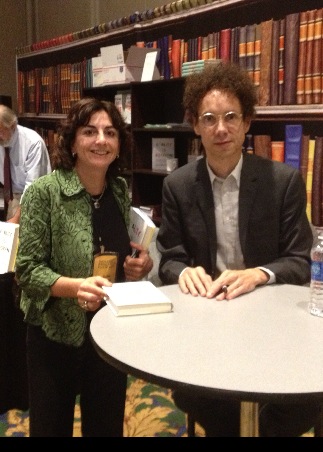 A few weeks ago, I found myself seated at a trendy Mexican restaurant in Minneapolis, an eager participant at one of the more enjoyable business lunches I’ve encountered lately. As you might expect, the topic quickly turned from the vagaries of the marketing life to the weather, summer vacation stories, the gym, far-too-early holiday planning (I’m looking at you, Target), and then, unexpectedly, to dieting. It was there where I learned Jim Garrity, SVP and head of CMB’s Financial Services, Insurance & Healthcare Practice, was quite a fan of Weight Watchers, one of the few truly successfully long-term dieting options out there – it earned Consumer Report’s highest mark for nutrition analysis.Jim had become a devotee of the Weight Watchers PointsPlus® plan, which, for someone I’d fancied a meat-and-potatoes man like me, came as a bit of a surprise. But as Jim continued to discuss the program and what he enjoyed about it, I realized that PointsPlus® was nothing more than another example of CMB’s brand and product development bread-and-butter: the tradeoff exercise.
A few weeks ago, I found myself seated at a trendy Mexican restaurant in Minneapolis, an eager participant at one of the more enjoyable business lunches I’ve encountered lately. As you might expect, the topic quickly turned from the vagaries of the marketing life to the weather, summer vacation stories, the gym, far-too-early holiday planning (I’m looking at you, Target), and then, unexpectedly, to dieting. It was there where I learned Jim Garrity, SVP and head of CMB’s Financial Services, Insurance & Healthcare Practice, was quite a fan of Weight Watchers, one of the few truly successfully long-term dieting options out there – it earned Consumer Report’s highest mark for nutrition analysis.Jim had become a devotee of the Weight Watchers PointsPlus® plan, which, for someone I’d fancied a meat-and-potatoes man like me, came as a bit of a surprise. But as Jim continued to discuss the program and what he enjoyed about it, I realized that PointsPlus® was nothing more than another example of CMB’s brand and product development bread-and-butter: the tradeoff exercise.
For those not familiar with how it works, PointsPlus® assigns a numeric point-value to each meal/snack/dessert/shake/whatever you can buy through the program, based on protein, carbohydrates, fat and fiber content. The system will then give you a daily points target, taking into account your height, weight, age and gender; read more about it here. Simply stay at or under your target, and…well, that’s it.
This, as you might expect, presents our would-be dieter with a daily flurry of choices. Do you have the bagel with cream cheese or the fresh fruit for breakfast? Go with a savory salad or a slim sandwich for lunch? And how do these choices affect what you have “left” at dinner? Sorry to burst your bubble, eager reader, but if you want that red velvet cake, you’re going to have to pass on the cream cheese.
Built on the economic principle of opportunity cost (the idea that to buy a product or undertake an activity, that product/activity must necessarily replace something else you might have bought or engaged in), these sorts of tradeoffs are exactly what we seek to model when researchers help develop brands, products, messaging campaigns, or basically anything else with a give-and-take. You can’t be the industry leader and try harder. If you want to offer premium customer service, you’re going to have to charge a bit more. Anyone who’s ever made a budget, whether on a ledger or www.Mint.com, understands that if you go to the concert, you might have to skip the movies this week.
Our job, then, is to master the usage of methodological techniques which replicate these real-world tradeoffs within a research setting. Almost all of my clients take advantage of Maximum-Difference Scaling, an exercise where participants select which items/features/messages/etc. they like most and least, four options at a time. By forcing this tradeoff, we can accurately prioritize huge lists of information in short order, not only rank-ordering but also sizing the distance between items. Many also use allocations, which allow participants to assign different values to a set of given options, but knowing there are only so many points to go around (often 100). My brand and product development engagements often utilize Discrete Choice (or Conjoint) Modeling, an extremely powerful form of tradeoff exercise where participants must choose between holistic brand positionings or fully-configured products. We can then deconstruct their decisions, analyze the tradeoffs, and find those pesky drivers of decision-making that are the foundation of marketing as we know it.
Think about it this way: if you’re still with me, you’ve traded off the time you could’ve spent watching E!, playing Candy Crush, or checking Facebook in favor of a little lesson in economics and research. So what’ll it be, then–the pasta or the seafood?
Nick is a Project Manager within CMB’s Financial Services, Insurance & Healthcare Practice, as well as a poker-playing behavioral economics and game theory nerd. You can follow him on Twitter @NAPangallo. He would always choose the pasta.



 2.
2. TMRE is always a whirlwind of meeting new people, catching up with clients and industry colleagues, and of course getting some time to reflect on the questions and challenges facing the Market Research industry and our clients. This weekend I took some time to round up 10 of the questions we heard asked, and sometimes even answered, at this year’s conference:10. What if gaming isn’t a waste of time?
TMRE is always a whirlwind of meeting new people, catching up with clients and industry colleagues, and of course getting some time to reflect on the questions and challenges facing the Market Research industry and our clients. This weekend I took some time to round up 10 of the questions we heard asked, and sometimes even answered, at this year’s conference:10. What if gaming isn’t a waste of time?  6. Do you have a relatable mission?
6. Do you have a relatable mission? Kristin Vincent, VP, Product at
Kristin Vincent, VP, Product at 
